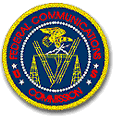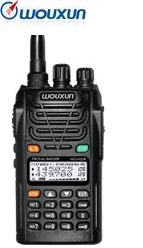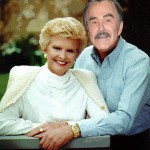Posts Tagged ‘FCC’
 Show Notes #095
Show Notes #095
Introduction:
- Welcome to episode 95 of Linux in the Ham Shack. Episode 100 looms on the horizon, and we’d like to do something a little special. Call in to the LHS voice mail line at +1-909-LHS-SHOW (1-909-547-7469), or send an email, and share your thoughts about the show.
- LHS recommends this LOL Cat image.
Announcements:
- Kevin O’Brien, Publicity Director of the Ohio LinuxFest, is looking for someone to step up and take on the role of Volunteer Coordinator. If anyone is interested please reply to news@ohiolinux.org.
- We now digress into a ramble about censorship.
- On page 45 of the December 2012 issue of QST has an article on vertical vs. horizontal antennas, a topic we discussed in episode 91. In the same issue, on page 52, there is also an article about the NorthWest Digital Radio UDR56K, a topic we discussed in episode 90. Are we seeing a pattern here?
- Also in that issue is a description of several FCC Proposed Rule Changes, and our hosts discuss each of them:
- Reduction of license expiration grace period from 2 years to 6 months.
- Reduction of vanity call waiting period from 2 years to 6 months.
- Reduction of the number of Volunteer Examiners at test sessions from 3 to 2.
- Possible allowance of “remote testing” facilities using video and audio over a network that allows for proper administration of tests.
- Allow single-slot TDMA transmissions.
- The 2012 Fort Wayne Hamfest is this weekend, November 17-18, in Fort Wayne, Indiana. This is also the ARRL Convention for Indiana. This launches Richard into reminiscing about the presentation of The Last Voice from Kuwait.
Topics:
- Symbolic (or soft) Links vs. Hard Links
- Russ and Richard offer a discussion of the difference between soft, or symbolic, links and hard links in Linux.
- A symbolic link is a pointer to another file name. Symbolic links can be created with the ln -s command:
ln -s [original file] [link name]
- Symbolic links can point to files on other volumes or file systems.
- Hard links, on the other hand, are pointers to the data of another file, just like a directory entry is a pointer to the first block of data for the file. Hard links are also created with the ln command, but without the -s switch.
- Hard links can only be used on the same file system.
- A symbolic link is equivalent to a Windows shortcut, a pointer to the name of another file. A hard link is a reference to the data (first inode) of another file, and thus must be created on the same file system.
- When the original file with associated hard links is deleted, the data remains until all of the hard links are also deleted. Deleting the original file with associated soft links will delete the file and the data, but the soft links will remain, now orphaned.
- More information about links is available here.
Feedback:
- Listener Dave left a comment on the web site expressing his appreciation for the show, and also became a subscriber. Thanks, Dave!
- Jeremy, KD5HQN, also commented on the web site, claiming he’s actually learning something from the shows! He also corrected Richard about the proper location of Orthanc. Thanks, Jeremy.
- Bill, KJ4KNI, asked, via Richard’s Facebook page, for suggestions about the best Linux distribution for a beginner. (Linux Mint 13 is a good choice.) He also wonders why a ham might use 75-ohm RG6 coax as an antenna feedline. Our hosts discuss the possibilities.
Contact Info:
- Contact Richard at kb5jbv@gmail.com, Russ at k5tux@lhspodcast.info, or both at the same time at info@lhspodcast.info.
- Listen to the live stream every other Tuesday at 8:00pm Central time. Check the LHS web site for dates.
- Leave us a voice mail at 1-909-LHS-SHOW (1-909-547-7469), or record an introduction to the podcast.
- Sign up for the LHS mailing list.
- Sign up for the MAGNetcon mailing list.
- LHS merchandise is available at the Merch link on Web site. Check out the Badgerwear or buy one of the other LHS-branded items at PrintFection.com/lhs or Cafe Press. Thanks!
- Thanks to Dave from Gamma Leonis for the theme music.
Music:
- “Easier As Us” by Michael McEachern, courtesy of Jamendo.
- “Wicked” by Fresh Body Shop, from their album Bring Me Down, courtesy of Jamendo.
 LHS Episode #095: I Has the Dumb
LHS Episode #095: I Has the Dumb
 Richard called this one of our best efforts to date, which means there must be some kind of worthwhile contained buried in all the tomfoolery somewhere. If you can find it, you’ll be that much wiser for whatever it is we discussed. Silliness aside, we discuss some proposed FCC rule changes for the amateur radio community, the difference between hard and soft (symbolic) linking for our Linux segment, and answer questions and receive praise from several members of our audience. On the whole it turned out to be a pretty good episode, and we sure had a lot of fun doing it. Thanks to all our listeners for your support and for keeping us motivated to bring you ever more episodes of Linux in the Ham Shack.
Richard called this one of our best efforts to date, which means there must be some kind of worthwhile contained buried in all the tomfoolery somewhere. If you can find it, you’ll be that much wiser for whatever it is we discussed. Silliness aside, we discuss some proposed FCC rule changes for the amateur radio community, the difference between hard and soft (symbolic) linking for our Linux segment, and answer questions and receive praise from several members of our audience. On the whole it turned out to be a pretty good episode, and we sure had a lot of fun doing it. Thanks to all our listeners for your support and for keeping us motivated to bring you ever more episodes of Linux in the Ham Shack.
73 de The LHS Guys
 FCC Proposes Part 97 Changes
FCC Proposes Part 97 Changes
 The FCC finally got around to addressing a number of issues via a NOTICE OF PROPOSED RULE MAKING AND ORDER. This proposal is an odd mix of Volunteer Examiner (VE) rules, changing the license renewal grace period and dealing with a problem with emission designators.
The FCC finally got around to addressing a number of issues via a NOTICE OF PROPOSED RULE MAKING AND ORDER. This proposal is an odd mix of Volunteer Examiner (VE) rules, changing the license renewal grace period and dealing with a problem with emission designators.
This notice proposes changes to Part 97 of the FCC Rules and seeks comment on these proposals:
- Require that VEs give examination credit to an applicant who can demonstrate that he or she formerly held a particular class of license
- Provide that a CSCE provides element credit for the holder’s lifetime
- Reduce the grace period for renewal of an expired license to six months
- Reduce the time before a call sign becomes available for reassignment to six months (to match the grace period)
- Reduce the number of VEs required to administer an examination from three to two
- Allow remote observation of examination sessions by VEs (allow exams to be given via an audio and video system)
- Clean up some issues in the rules concerning Morse code testing (which has been eliminated)
- Allow emission types FXE and FXD to clear up issues concerning MOTOTRBO and DMR (see my previous post on this topic)
Comments on theses items must be filed with the FCC within 60 days.
73, Bob K0NR
 Can I Use My Ham Radio on Public Safety Frequencies?
Can I Use My Ham Radio on Public Safety Frequencies?
 We have quite a few licensed radio amateurs that are members of public safety agencies, including fire departments, law enforcement agencies and search and rescue. Since they are authorized users of those public safety channels, they often ask this question:
We have quite a few licensed radio amateurs that are members of public safety agencies, including fire departments, law enforcement agencies and search and rescue. Since they are authorized users of those public safety channels, they often ask this question:
Can I use my VHF/UHF ham radio on the fire, police or SAR channel?
It is widely known that many amateur radios can be modified to transmit outside the ham bands. The answer to this question used to be that amateur radio equipment cannot be used legally on public safety channels because it is not approved for use under Part 90 of the FCC Rules. (Part 90 covers the Private Land Mobile Radio Services.) The only option was to buy a commercial radio with Part 90 approval and a frequency range that covered the desired amateur band. Some commercial radios tune easily to the adjacent ham band but some do not. The commercial gear is usually two to three times as expensive as the amateur gear, and just as important, does not have the features and controls that ham operators expect. Usually, the commercial radios do not have a VFO and are completely channelized, typically changeable only with the required programming software.
The situation has changed dramatically in the past two years. Several wireless manufacturers in China (Wouxun, Baofeng, etc.) have introduced low cost handheld transceivers into the US amateur market that are approved for Part 90 use. These radios offer keypad frequency entry and all of the usual features of a ham radio. It seems that these radios are a viable option for dual use: public safety and amateur radio.
Here is a short list of the most common radios on the market:
| Model | Features | Price |
| Wouxun KG-UV2D, KG-UV3D | Several different models with slight variation in features, check carefully before ordering 136-174/420-470 MHz 5 kHz is smallest frequency step | $120 |
| Wouxun KG-UV6D | Several different models with slight variation in features, check carefully before ordering 136-174 / 420-520 MHz 2.5 kHz frequency step | $175 |
| Baofeng UV-5R, UV-5RC | The UV-5RC is an updated case style 136-174 / 400-480MHz 2.5 kHz frequency step | $65 |
Some Things to Consider When Buying These Radios
- The manufacturers offer several different radios under the same model number. Also, they are improving the radios every few months with firmware changes and feature updates. This causes confusion in the marketplace, so buy carefully.
- Make sure the vendor selling the radio indicates that the radio is approved for Part 90 use. I have seen some radios show up in the US without an FCC Part 90 label.
- Make sure the radio is specified to tune to the channels that you need.
- The 2.5-kHz tuning step is required for some public safety channels. Your particular set of frequencies may or may not need it. For example, a 5-kHz frequency step can be used to select frequencies such as 155.1600 MHz and 154.2650 MHz. However, a 2.5 kHz step size is needed to select frequencies such as 155.7525 MHz. There are a number of Public Safety Interoperability Channels that require the 2.5-kHz step (e.g., VCALL10 155.7525 MHz, VCALL11 151.1375 MHz, VFIRE24 154.2725). The safest thing to do for public safety use is to get a radio that tunes the 2.5-kHz steps.
- Although these radios have two frequencies in the display, they only have one receiver, which scans back and forth between the two selected frequencies. This can be confusing when the radio locks onto a signal on one of the frequencies and ignores the other.
Recommendation
I own 3 different models of Wouxun radios and two Baofeng UV-5R radios. I think they are all great radios for what they do. For serious public safety use, I would recommend getting the Wouxun KG-UV6D with the 2.5-kHz frequency step. The controls of the Wouxun are superior, including a knob for channel/VFO selection and RPT key for changing repeater shift. The Wouxun software works much better than Baofeng’s (which is really a mess). Also, if you show up at an incident with the Baofeng, your fellow first responders will think it is a toy. If you are absolutely sure you don’t need the 2.5-KHz frequency step, then you might consider one of the other Wouxun models.
I have purchased several radios from importcommunications.com and have been very satisfied with the service. You may want to shop around for the best price.
73, Bob K0NR
 FCC Says “What Restrictive Covenant Problem?”
FCC Says “What Restrictive Covenant Problem?”
From the ARRL web site:
On August 20 — in response to a Spring 2012 Congressional directive — the Federal Communications Commission released its findings on the Uses and Capabilities of Amateur Radio Service Communications in Emergencies and Disaster Relief: Report to Congress Pursuant to Section 6414 of the Middle Class Tax Relief and Job Creation Act of 2012.
There was hope that the thousands of comments from amateur radio operators concerning the restrictions that homeowners associations place on the use of antennas would get the FCC’s attention. Maybe the FCC would see that the overall effectiveness of the amateur radio service for emergency use is being limited by these arbitrary, overly restrictive rules? (See a summary of my comments here.)
But, the FCC responded with this simple statement:
Moreover, while commenters suggest that private land use restrictions have become more common, our review of the record does not indicate that amateur operators are unable to find homes that are not subject to such restrictions. Therefore, at this time, we do not see a compelling reason for the Commission to revisit its previous determinations that preemption should not be expanded to CC&Rs.
I am not surprised by this response but still disappointed.
73, Bob K0NR
 Show Notes #083
Show Notes #083
Introduction:
- Back from Dayton and ready to go.
Topics:
- Dayton Hamvention 2012
- LHS had the same booth as last year at North Hall #131. Estimated attendance was 25,000 individuals. Russ recounts the experience. Thanks to Matt, KC8BEW, who stopped by and helped out at the booth. The LowSWR podcasters stopped by, too.
- FCC Dismisses Texas Ham’s Fourth Petition, Calls it “Repetitive”
- Our hosts discuss.
- Contest logging for Linux.
- Several people at Hamvention asked about contest logging software for Linux, but Russ was at a loss for a recommendation. Upon his return, he discovered…
- SO2SDR Contest Logging Software
- Stefano, IZ3NVR/KD2BGM was trying to get so2sdr to work under Linux Mint and while it would compile, it did not run, so Russ set about trying to get it going.
- It’s not packaged for Debian or Fedora, so it must be built from source, available at the link above.
- The program is written in Qt, so it can be run on devices which support that environment, including Linux and Windows. Of course, Qt must be installed in order to compile so2sdr.
- Russ also had to install the following packages on his Linux Mint machine: portaudio19-dev (NOT libportaudio-dev; apparently, libportaudio-dev is too old), fftw3 and fftw3-dev
- The compilation procedure consists of:
qmake make sudo make install - so2sdr compiled and ran fine. It did complain that it wanted a parallel port for switching between radios, but you can ignore that if you don’t need to do that.
- Russ gives an overview of the features and capabilities.
- There are a few drawbacks:
- An apparent lack of SSB support? It seems to be CW-only.
- Frequency input checking is broken.
- Keystrokes are not intuitive, but are well-documented.
- However, the built-in help file is quite useful.
Feedback:
- E-mail from Larry, KG4Q, extolling fldigi and JT65-HF. He wishes there was a version of JT65-HF for Linux. Well, Larry, there is! You can download the source here. Also, WSJT does JT65, too.
- Chris, K4FH, caught up with Russ at Hamvention and talked about his Linux in the Ham Shack presentation. He managed to put together a fine bunch of slides completely without our help. Sorry, Chris!
Contact Info:
- Contact Richard at kb5jbv@gmail.com, Russ at k5tux@lhspodcast.info, or both at the same time at info@lhspodcast.info.
- Listen to the live stream every other Tuesday at 8:00pm Central time. Check the LHS web site for dates.
- Leave us a voice mail at 1-909-LHS-SHOW (1-909-547-7469), or record an introduction to the podcast.
- Sign up for the LHS mailing list.
- Sign up for the MAGNetcon mailing list.
- LHS merchandise is available at the Merch link on Web site. Check out the Badgerwear or buy one of the other LHS-branded items at PrintFection.com/lhs or Cafe Press. Thanks!
- Thanks to Dave from Gamma Leonis for the theme music.
Music:
- “Down Today” by Jonathan Coulton from the album “Artificial Heart”.
- “Sucker Punch” by Jonathan Coulton from the album “Artificial Heart”.
 LHS Episode #083: Smokey & The First Lady
LHS Episode #083: Smokey & The First Lady
 Welcome to the 83rdest episode of Linux in the Ham Shack. Freshly back from the Dayton Hamvention, Russ jumps in by telling everyone his experience at the show this year. The short version: It was great! From there, things move on to a question of FCC rules, at least in the mind of one ham.
Welcome to the 83rdest episode of Linux in the Ham Shack. Freshly back from the Dayton Hamvention, Russ jumps in by telling everyone his experience at the show this year. The short version: It was great! From there, things move on to a question of FCC rules, at least in the mind of one ham.
One of the topics that kept repeating at Hamvention was: What is a good contest logger for Linux? Up until recently, it was hard to think of one. The ncurses-based application yfktest is out there, but thanks to IZ3NVR, our hosts discuss a new option. Tune in to find out what. There’s also some feedback, occasional rambling and hardcore lunacy. Everything you’ve come to expect from an episode of LHS.
73 de The LHS Guys












